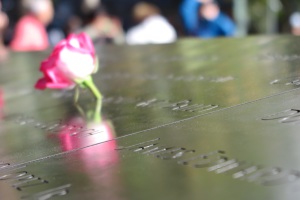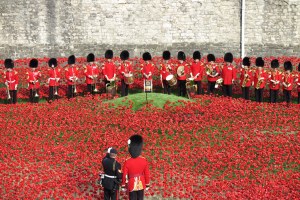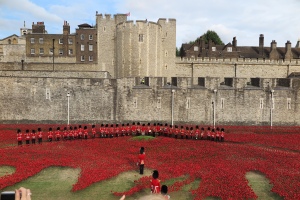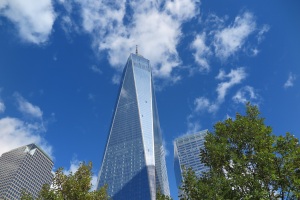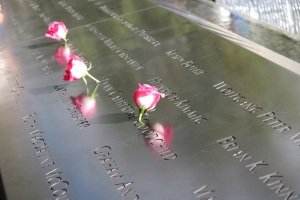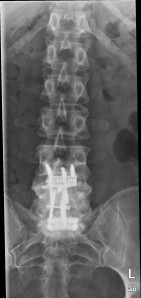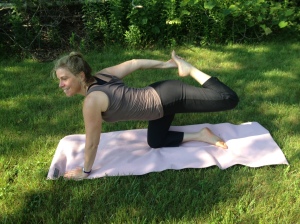It seems as though everyone is posting about the attacks at the Boston Marathon yesterday. Most of us can’t erase the images, and the unfolding events, from our minds. What I will remember the most when I think about this day are three young children–all boys, all strangers.
Patriot’s Day is a state holiday in Massachusetts. If you live here, it’s a significant date on the calendar. Patriots Day marks an unofficial start to spring, the beginning of a week of school vacation, an opportunity to reflect on the intellectual and philosophical spirit and emerging national identity that heralded the Revolutionary War, and a chance to celebrate two beloved athletic events: a Red Sox home game, and the Boston Marathon, which ends less than a mile from Fenway Park.
I’m a marathon runner myself. I’ve covered those 26.2 miles on foot many times, and crossed the finish line in front of the Boston Public Library twice. As many people have written in the past two days, the Marathon has become not only a premiere international race, but also an individual and collective social action effort. Many of the runners making their way down Boylston Street at the time of the explosions had entered the race to end cancer, AIDS, homelessness, hunger, and other medical and social causes. They were not celebrity athletes; they were the “regular” people who find time to train on weekends, early in the mornings, and late in the day. They slogged through the snowy streets this winter, building up their stamina. They sent letters and posted pledge sheets, collecting donations in the name of loved ones. They stood at the starting line on the main street of Hopkinton yesterday morning, exhilarated and a little anxious as they thought about the next four hours of their day.
Most of the spectators standing along those four blocks had been there for hours. They had seen the champions speed past. Now they were watching the 9- and 10-minute milers in their final push to the blue and gold marker painted on the street. They cheered, calling out last words of encouragement, sharing the moment of personal victory for each of those people, enjoying a crisp spring day–that is the spirit of this marathon.
Some of the folks along those last few blocks–Hereford, Gloucester, and Fairfield Streets– made their way into the Marathon scene after leaving the baseball game, which had just ended. The Husband and I were in the midst of that group. We had enjoyed a spectacular day watching our team from a pair of terrific seats above the first base line. Part of the joy of the game was provided by our seatmates–a little boy named David and his father. Although we had never met, we all subscribed to the commonly accepted assumption that anyone who shares your row at Fenway is, at least for those few hours, a friend. David is a first-grader. He has the face of countless children who fall in love with baseball for both the joy of the game and the mystique of the ball park. David’s father and I talked a bit between innings and during the slow moments. We expressed our shared devotion to our sons. The dad agreed with me completely when I said that The Boy is my most important investment. We discussed schools, vacations, and family values. David ate a hot dog, sipped on a large soda in a commemorative cup, and smiled shyly when I asked him questions. He kept track of the pitching changes, the outs, and the batting order.
When the game ended, The Husband and I decided that our best plan was to walk from Fenway through the Back Bay and over the bridge into Cambridge, where we would take the Red Line to the commuter train back to our home in the suburbs. In order to execute that plan, we had to get across the Marathon course at Beacon Street. Runners were streaming past us, with a little more than half a mile to go to the finish line. We stopped for a few minutes to watch them before joining the throngs that were descending into the subway station at Kenmore Square. I held onto The Husband’s coat sleeve to keep from getting separated from him as we made our way through the crowded tunnel under the street and out to the other side. Not long after we had begun our walk across the bridge, we heard the first blast. It was about four blocks behind us. A huge cloud of white-gray smoke rose above the buildings. Everyone stopped and turned to look. People offered their first ideas: a commemorative cannon, a traffic accident, an exploding manhole cover, a burst gas pipe…then the second bomb went off. More smoke drifted up. At that moment, we knew something was wrong. Within minutes, sirens sounded from every direction. Ambulances, police cars, fire trucks, and motorcycles screamed past us. For several minutes, we stood on the bridge watching, although there was really nothing to see. We checked Twitter, news websites, and e-mail. Then we walked on, looking for a place that we could see a TV.
We entered one of the MIT bar/restaurants just as the first camera coverage was being aired. The place wasn’t very crowded, so we were able to find a seat. The bartender turned up the volume on the television and as the reports came in, everyone stopped talking to watch and listen. Those images–dazed runners, spectators covered in blood, emergency responders pushing wheelchairs and gurneys–were almost impossible to process. We had been right there. We had heard the blasts. We were still less than a mile away.
More and more people began to fill the restaurant. Many of them had been walking back from the game, or from watching the race. They had also heard the explosions and wanted to get more information. I turned around to see a little boy with his eyes wide and his mouth open, staring at the screen. He couldn’t have been more than seven or eight years old. I’m sure he had come in with an adult, but there was no one standing with him. I said, “are you OK, watching this??” He looked at me for a few seconds and nodded his head. “This looks really scary, doesn’t it?” I continued. “You know, there are a lot of grownups over there helping everyone. They’ll take care of the people who are hurt.” I didn’t know what else to say.
A few hours later, The Husband and I were safely back at home, still trying to absorb the events and watching more news. When it was revealed that one of the lives lost had been that of an eight-year-old boy, my heart sank even more than it had earlier in the day. A little boy with his family, enjoying one of the great, wholesome, community-wide celebrations in our city. A little kid, watching people accomplish their personal goals, modeling perseverance, motivation, and the human spirit.
Three little boys, surrounded by adults. What did David and his father talk about when they found out that this horror occurred a few minutes after the baseball game ended? What did that child in the bar think, and who else helped him make sense what he had seen on television? What happens to a family literally shattered on a street in the midst of a civic celebration that suddenly turns into a war zone?
I can’t stop thinking of the poem that Nikki Giovanni wrote in the aftermath of September 11. It’s called “Desperate Acts.”
Its not easy to understand
Why angry men commit
Desperate acts
Its not easy to understand
How some dreams become
Nightmares
Those who wish
And those who need
Often feel alone
Its easy to strike back
But hard to understand
She’s right. It isn’t easy to understand. But we need to teach about understanding. For David, for the little boy in the bar, for the children who knew the child who died. We are the grownups. We are their grownups.
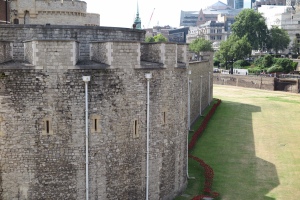 When we got back to the hotel, I downloaded the photos from the day. The poppies around the base of the tower were lovely, but at the time we didn’t realize how monumental they were. As it turned out, the spectacular installation that was just completed today (November 11), had just been started.
When we got back to the hotel, I downloaded the photos from the day. The poppies around the base of the tower were lovely, but at the time we didn’t realize how monumental they were. As it turned out, the spectacular installation that was just completed today (November 11), had just been started.